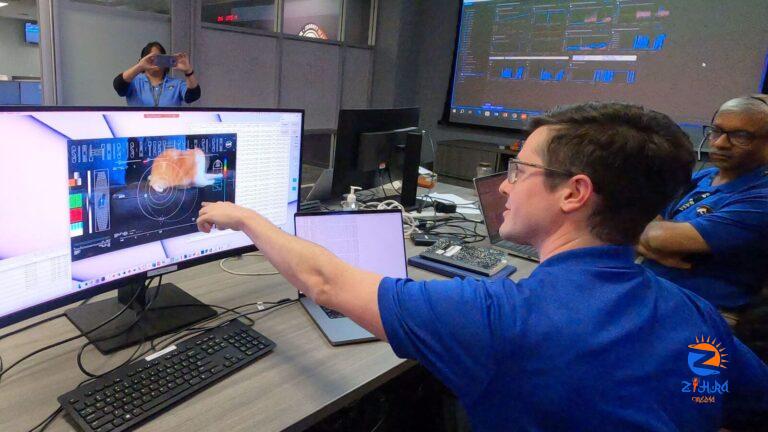
[ad_1]
NASA scientists recently conducted a study on asteroid rocks that their spacecraft took from a distant “potentially hazardous” asteroid. The findings reveal that the spacecraft managed to take hold of a significant portion of the asteroid, almost more than double what was expected.
In 2023, the OSIRIS-REx capsule was taken to NASA’s Johnson Space Center in Houston following its touchdown in the Utah desert on September 24. At the Centre, researchers commenced work to disassemble the capsule which was much trickier than expected as two of the capsule’s 35 fasteners were stuck. Hence, NASA scientists initially were able to collect only about 2.48 ounces (70.3 grams) of the sample that happened to be resting on the lid of the canister.
Also read: NASA telescopes witness star’s dramatic meltdown, solve fast radio burst puzzle?
The breakthrough into the capsule was achieved only after numerous failed attempts to open it with specially designed and tested bespoke tools. Once scientists finally opened the lid’s last two clasps, they retrieved 1.81 ounces (51.2 grams) more of the asteroid material from inside the canister.
Also read: NASA releases image of star-forming region from Hubble telescope
The space agency’s 2016 mission which was launched in September, covered a distance of 200 million miles (320 million kilometres) to reach Bennu before making its way to return to the home planet, Earth. NASA’s mission scientists spent around two years just searching for the appropriate landing site on Bennu’s craggy surface to collect samples from the asteroid.
Also read: Voyager-1 unable to send data from outside Solar System, says NASA
The asteroid sample consisted of roughly 4.3 ounces (122 grams) of rocky space rubble which was almost more than double what was expected.
OSIRIS-REx fired a burst of nitrogen from its Touch-and-Go Sample-Acquisition Mechanism on making its first contact with the asteroid. This nitrogen shot was to ensure that the spacecraft had a precise landing, to prevent it from sinking through the asteroid and thus to have a hold of the sample.
Also read: Apollo to Artemis: Why America is betting big on private space
Rocky material may reveal earliest signs of life
The OSIRIS-REx mission is the first spacecraft by NASA that happened to retrieve rocky space material from the asteroid Bennu that could possibly give an insight into the earliest signs needed for life. It was discovered that the sample contained around 4.5 billion-year-old rocks that are from the earliest years of the solar system. Specimens of primordial elements that are believed to have sparked life on Earth were also found in the sample.
Also read: ISRO gears up for NISAR launch with Nasa after INSAT-3DS success: All you need to know about the radar imaging satellite
Moreover, in 2020, Japan Aerospace Exploration Agency’s Hayabusa2 spacecraft also found on the asteroid Ryugu, some of the building blocks of life including uracil that are one of the nucleobases for RNA. The OSIRIS-REx mission researchers also hope to find other such biological precursors inside the Bennu sample.
Unlock a world of Benefits! From insightful newsletters to real-time stock tracking, breaking news and a personalized newsfeed – it’s all here, just a click away! Login Now!
Download The Mint News App to get Daily Market Updates.
Published: 21 Feb 2024, 11:47 AM IST
[ad_2]